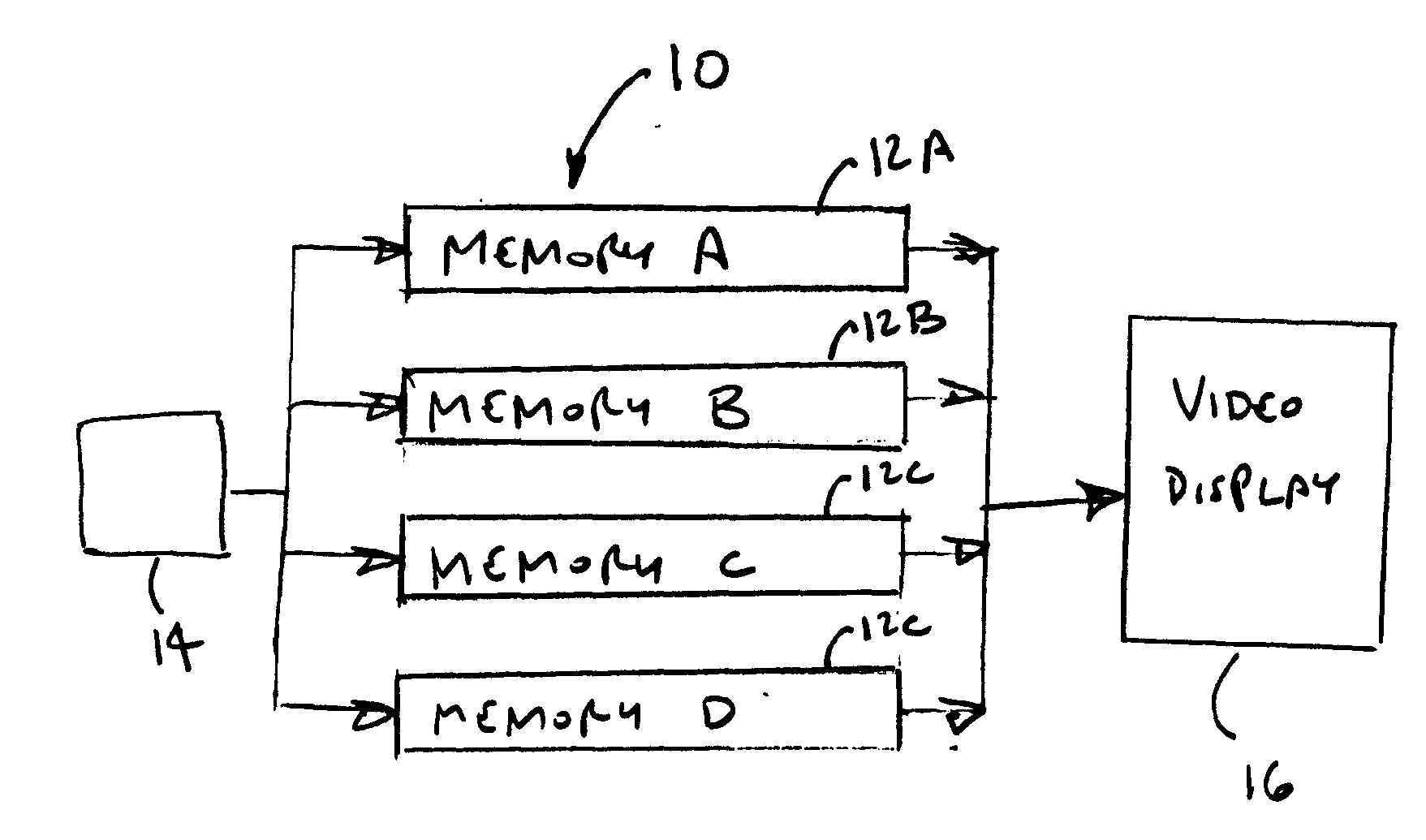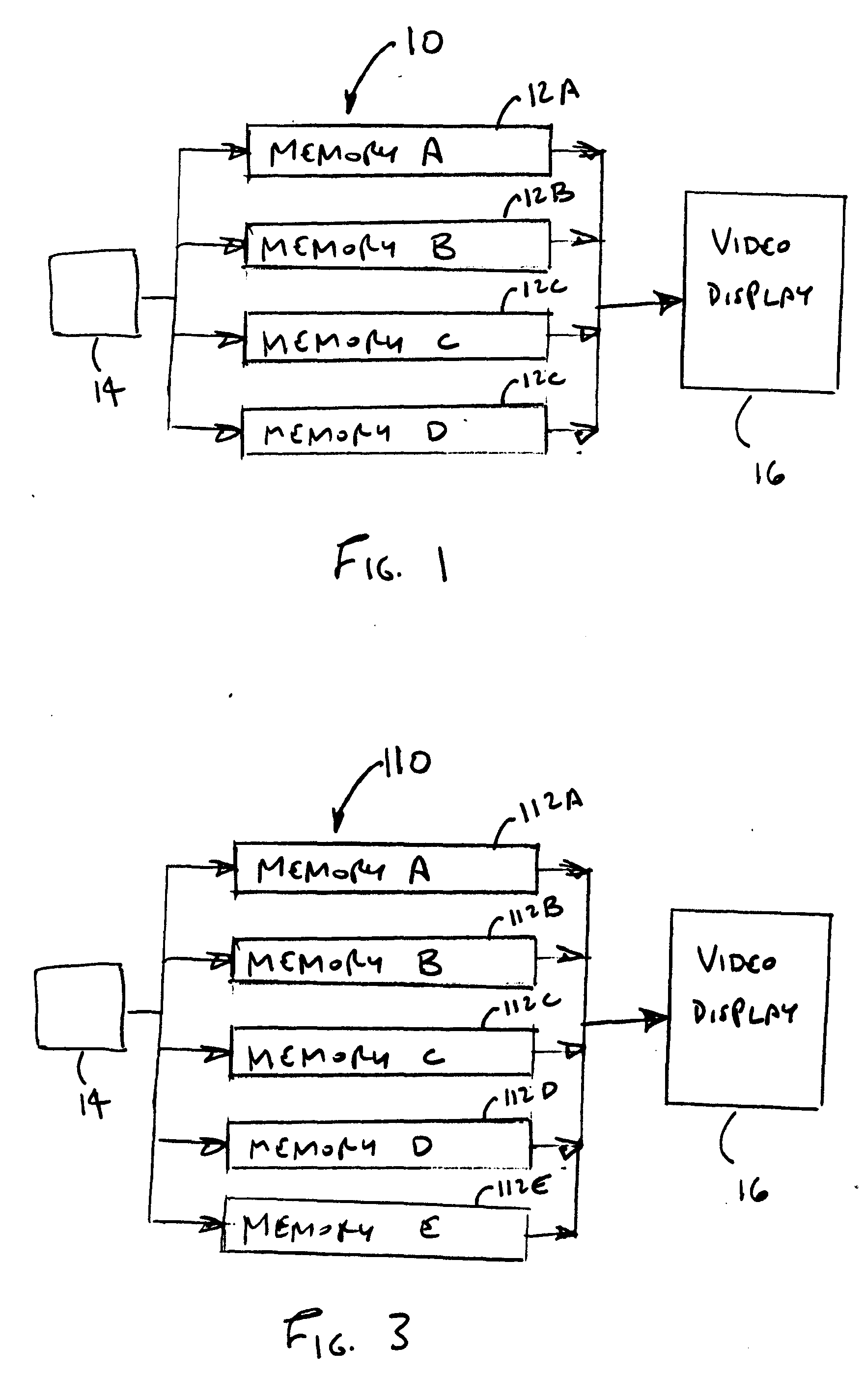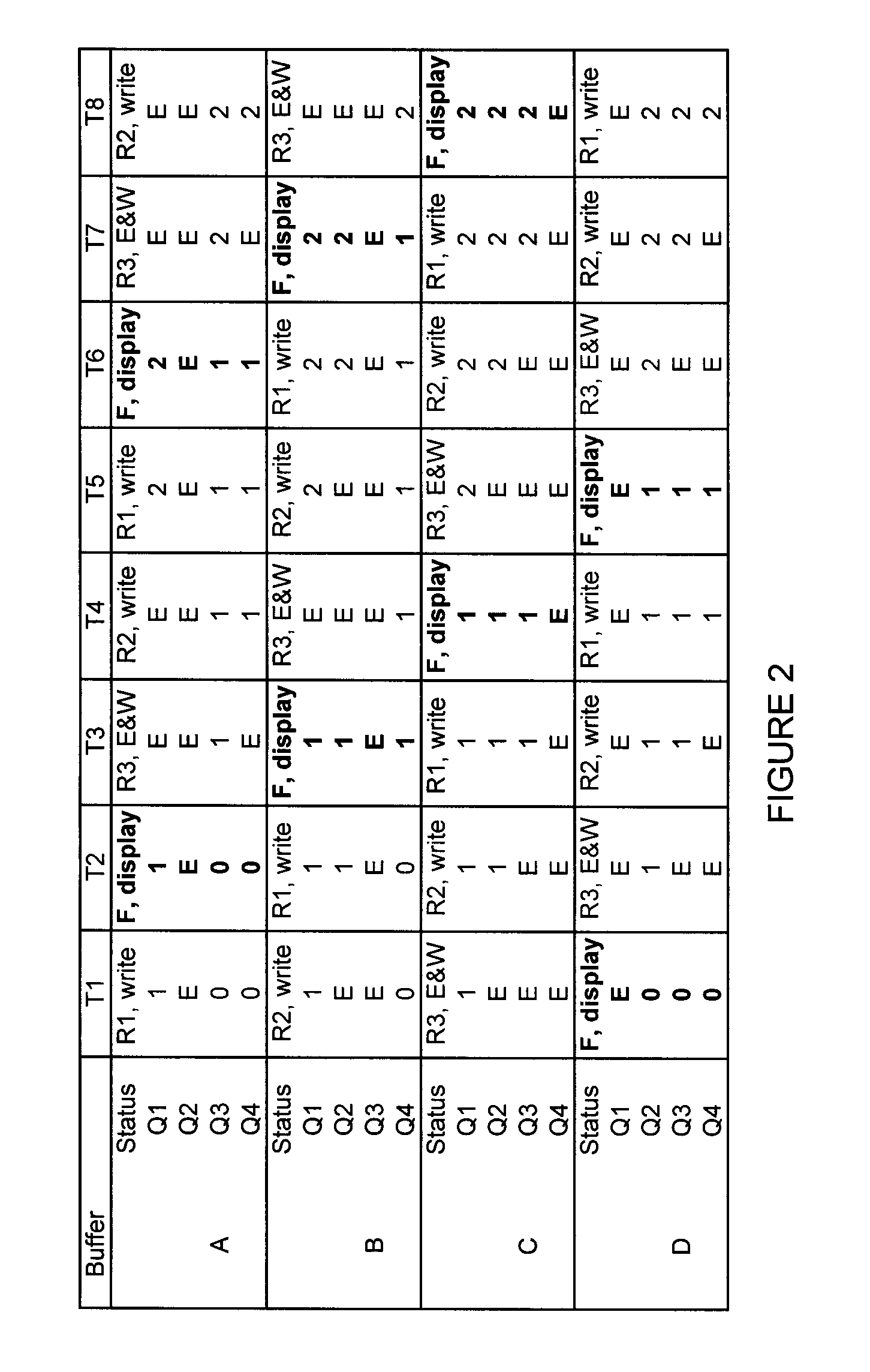Method for reducing video image latency
a video image and latency reduction technology, applied in the field of latency reduction, can solve the problems of old image being displayed, generally rate-limiting activity in the rear buffer, and the image being presently displayed, etc., and achieve the effect of reducing image latency
- Summary
- Abstract
- Description
- Claims
- Application Information
AI Technical Summary
Benefits of technology
Problems solved by technology
Method used
Image
Examples
embodiment 1
[0033]FIG. 1 schematically illustrates a first embodiment 10 where four raster memory buffers 12, sub-designated as A through D, are provided. Each raster memory buffer 12 is divided into four quarters for receiving stroke video frames in one-quarter portions. Each raster memory buffer 12 is adapted to be in communication with an input source 14, from which input data comprising the stroke video frames are received, that is, each buffer may be in a receiving condition. Each raster memory buffer 12 is also adapted to be communicated with a display device 16, on which the data are visually presented, that is, each buffer may also be in a display condition. In this embodiment, the raster memory buffers 12 are rotated so that each becomes the “front” or display buffer once in each stroke video frame. In a 60 Hz system, for example, as is conventional in the United States, where a stroke video frame is 16.67 msec in duration, the raster memory buffers 12 will be sequentially rotated ever...
embodiment 2
[0043]FIG. 3 schematically illustrates a five-memory-buffer video display system 110. In this setup, five raster memory buffers 112, sub-designated as A through E, are provided. Each raster memory buffer 112 is divided into four quarters for receiving stroke video frames in one-quarter portions. Each raster memory buffer 112 is in communication with an input source 14, from which input data comprising the stroke video frames are received. Each raster memory buffer 112 is also communicated with a display device 16, on which the data are visually presented. In this embodiment, the raster memory buffers 112 are rotated so that each becomes the “front” or display buffer once in each stroke video frame. In a 60 Hz system, for example, as is conventional in the United States, where a stroke video frame is 16.67 msec in duration, the raster memory buffers 112 will be sequentially rotated every 4.167 msec, that is, every 0.25 stroke video frame. In a 50 Hz system, as would be conventional i...
embodiment 3
[0056]A third embodiment is achieved using the same four-memory-buffer setup as shown in FIG. 1. In this embodiment, as in the first embodiment, four memory buffers, designated as A through D, are provided.
[0057]Referring to FIG. 5, during a first rmb time period T1 (0 to 0.25 svf), image data in raster memory buffer D are displayed. The displayed data are the last 50% of an image designated as Stroke Video Frame (“SVF”) 0. The first two quarters of raster memory buffer D will be empty, so the displayed image for those portions will be effectively a black screen, although the time on the screen will be sufficiently short that this will not be visually perceptible. Simultaneously (at least within rmb time period T1), a first quarter portion of SVF 1 is being written to raster memory buffers A, B and C. In one variation of this embodiment, raster memory buffers B and C are erased before any writing is made to them. In another embodiment, raster memory buffer C is only erased during ti...
PUM
 Login to View More
Login to View More Abstract
Description
Claims
Application Information
 Login to View More
Login to View More - R&D
- Intellectual Property
- Life Sciences
- Materials
- Tech Scout
- Unparalleled Data Quality
- Higher Quality Content
- 60% Fewer Hallucinations
Browse by: Latest US Patents, China's latest patents, Technical Efficacy Thesaurus, Application Domain, Technology Topic, Popular Technical Reports.
© 2025 PatSnap. All rights reserved.Legal|Privacy policy|Modern Slavery Act Transparency Statement|Sitemap|About US| Contact US: help@patsnap.com



